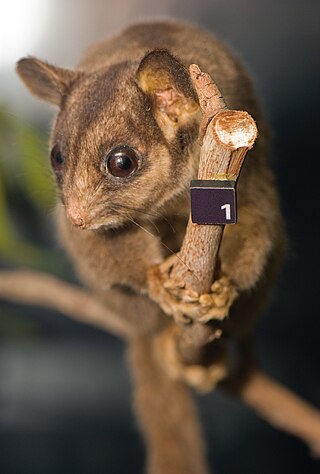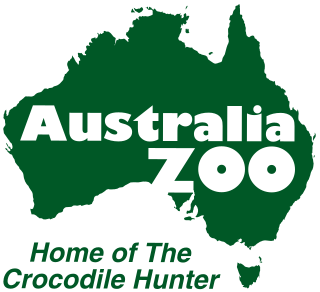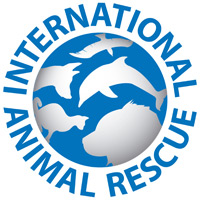
Kangaroos are four marsupials from the family Macropodidae. In common use the term is used to describe the largest species from this family, the red kangaroo, as well as the antilopine kangaroo, eastern grey kangaroo, and western grey kangaroo. Kangaroos are indigenous to Australia and New Guinea. The Australian government estimates that 42.8 million kangaroos lived within the commercial harvest areas of Australia in 2019, down from 53.2 million in 2013.

The sugar glider is a small, omnivorous, arboreal, and nocturnal gliding possum. The common name refers to its predilection for sugary foods such as sap and nectar and its ability to glide through the air, much like a flying squirrel. They have very similar habits and appearance to the flying squirrel, despite not being closely related—an example of convergent evolution. The scientific name, Petaurus breviceps, translates from Latin as "short-headed rope-dancer", a reference to their canopy acrobatics.

Tree-kangaroos are marsupials of the genus Dendrolagus, adapted for arboreal locomotion. They inhabit the tropical rainforests of New Guinea and far northeastern Queensland, along with some of the islands in the region. All tree-kangaroos are considered threatened due to hunting and habitat destruction. They are the only true arboreal macropods.

Leadbeater's possum is a critically endangered possum largely restricted to small pockets of alpine ash, mountain ash, and snow gum forests in the Central Highlands of Victoria, Australia, north-east of Melbourne. It is primitive, relict, and non-gliding, and, as the only species in the petaurid genus Gymnobelideus, represents an ancestral form. Formerly, Leadbeater's possums were moderately common within the very small areas they inhabited; their requirement for year-round food supplies and tree-holes to take refuge in during the day restricts them to mixed-age wet sclerophyll forest with a dense mid-story of Acacia. The species was named in 1867 after John Leadbeater, the then taxidermist at the Museum Victoria. They also go by the common name of fairy possum. On 2 March 1971, the State of Victoria made the Leadbeater's possum its faunal emblem.

The mountain pygmy possum ; also simply known as the burramys, is a small, mouse-sized nocturnal marsupial of Australia found in dense alpine rock screes and boulder fields, mainly southern Victoria and around Mount Kosciuszko in Kosciuszko National Park in New South Wales at elevations from 1,300 to 2,230 metres. At almost 14 cm (5.5 in), its prehensile tail is longer than its 11 cm (4.3 in) combined head and body length. Its diet consists of insects, fleshy fruits, nuts, nectar and seeds. Its body is covered in a thick coat of fine grey fur except for its stomach, which is cream coloured; its tail is hairless. On the underside of the female's body is a pouch containing four teats. This possum is the only extant species in the genus Burramys. It is also the only Australian mammal restricted to alpine habitat.

WIRES Wildlife Rescue is the largest wildlife rescue & rehabilitation charity in Australia. It is a non-profit organisation providing rescue and rehabilitation for all native Australian fauna. All animal rescuers and carers are volunteers. It is funded by public donations and operates throughout the most populous Australian state, New South Wales.

Australia Zoo is a 700-acre (280 ha) zoo in the Australian state of Queensland on the Sunshine Coast near Beerwah/Glass House Mountains. It is a member of the Zoo and Aquarium Association (ZAA), and is owned by Terri Irwin, the widow of Steve Irwin, whose wildlife documentary series The Crocodile Hunter and his family's new show Crikey! It's the Irwins made the zoo a popular tourist attraction.
The Born Free Foundation is an international wildlife charity that campaigns to "Keep Wildlife in the Wild". It protects wild animals in their natural habitat, campaigns against the keeping of wild animals in captivity and rescues wild animals in need. It also promotes compassionate conservation, which takes into account the welfare of individual animals in conservation initiatives. Born Free also creates and provides educational materials and activities that reflect the charity's values.

The Tasmanian pygmy possum, also known as the little pygmy possum or tiny pygmy possum, is the world's smallest possum. It was first described by Oldfield Thomas in 1888, after he identified that a museum specimen labelled as an eastern pygmy possum in fact represented a species then unknown to science. The holotype resides in the Natural History Museum in London.

Wildlife rehabilitation is the treatment and care of injured, orphaned, or sick wild animals so that they can be released back to the wild.
Robert Eric Irwin is an Australian naturalist, animal conservationist, former zookeeper, and a herpetologist known for his conservation and husbandry work with apex predators and reptiles. He is the founder of the Queensland Reptile and Fauna Park. His son was the conservationist and well-known international television personality Steve Irwin.

The Hobart Zoo was an old-fashioned zoological garden located on the Queen's Domain in Hobart, Tasmania, Australia. The Zoo site is very close to the site of the Tasmanian Governor's House, and the Botanical Gardens. Although its location is now primarily the site of a Hobart City Council depot, some remnants and archaeological remains of the original Zoo can still be seen.

The western pygmy possum, also known as the southwestern pygmy possum or the mundarda, is a small marsupial found in Australia. Genetic studies indicate its closest relative is probably the eastern pygmy possum, from which its ancestors diverged around eight million years ago.

Tasmania Zoo is a zoo located in Launceston, in the Australian state of Tasmania. Situated on 900 acres (360 ha) of old growth native bushland, it is home to the state's largest collection of native and exotic animals. Tasmania Zoo is a fully accredited member of the Zoo and Aquarium Association, working closely with all Australasian zoos, and are involved in various species management programs.

International Animal Rescue (IAR) is an animal protection and conservation non-profit organisation that comes to the aid of suffering animals with hands-on rescue and rehabilitation and the protection of wildlife habitats. IAR returns rehabilitated animals to the wild while also providing permanent sanctuary for those that cannot fend for themselves. Its work includes cutting free and caring for captive bears in India and Armenia, rescuing and rehabilitating orangutans and other primates in Indonesia and treating injured and orphaned howler monkeys in Costa Rica. IAR strives to educate the public in the humane treatment of all animals and the preservation of the natural environment. International Animal Rescue has offices in the United Kingdom, United States, India, Indonesia and Malta.

Featherdale Wildlife Park is a zoo located in Doonside, Sydney, Australia. The park is located in Sydney's west, approximately 40 km (25 mi) from Sydney's CBD. The park contains various species native to Australia, and is known to be one of the world's largest collections of Australian fauna. The facility provides displays, events and interactive experiences. The site covers 3.29 hectares, ranging from animal enclosures and display areas to visitor facilities, including picnic spaces, shops and basic amenities. It specialises in Australian native wildlife and birds, as well as reptiles and marsupials. The premises is accredited by the Zoo Aquarium Association Australia.

Wildlife HQ Zoo, is located at the Big Pineapple, Woombye, Queensland on the Sunshine Coast, Queensland and opened in November 2013. In March 2014 many animals were relocated from the now closed Alma Park Zoo.
Tehree Alice Gordon is an Australian volunteer who has been working with animals since the 1950s. In 1975, Gordon and her husband established the Jirrahlinga Koala and Wildlife Sanctuary. Upon opening, Jirrahlinga became the first ever koala sanctuary to be established in Victoria, Australia. In 2001, Gordon was awarded the Centenary Medal and she was named the Senior Australian of the Year in 2004.

WA Wildlife, operated by Native ARC Inc, is a wildlife rescue, treatment and rehabilitation facility in the Beeliar Wetlands near Bibra Lake, Western Australia; it was the first wildlife rehabilitation facility to be licensed as a veterinary hospital by the Veterinary Practice Board of Western Australia in 2018. It has a purpose built hospital to care for the animals, with intensive care unit facilities to care for animals that would have previously been euthanised. The hospital provides treatment to more than 6000 sick and injured native animals each year. Facilities include a triage room, treatment room, consultation room, laboratory, surgery, radiology, ICU, seabird, mammal and reptile wards, isolation ward with decontamination chamber and a stand-alone necropsy suite. WA Wildlife is part of group of organisations helping to protect the nests of the snake-necked turtles that breed around Bibra Lake. In 2020 it was estimated that 25 of the hatchlings were able to make it to the safety of the lake. Native Arc Inc is a registered charity, number 21503, licensed under the Charitable Collections Act 1946.

















